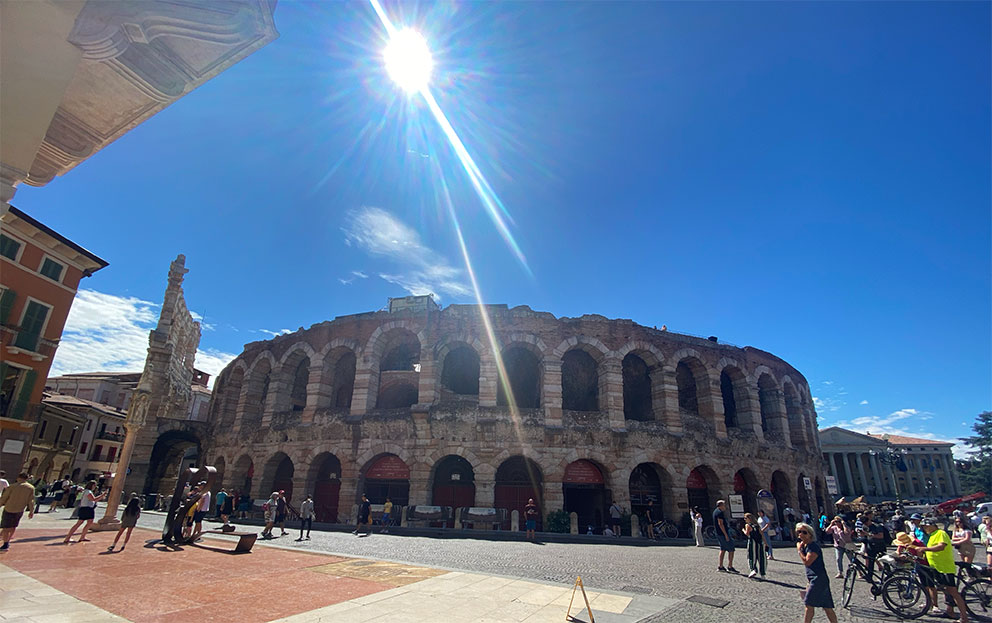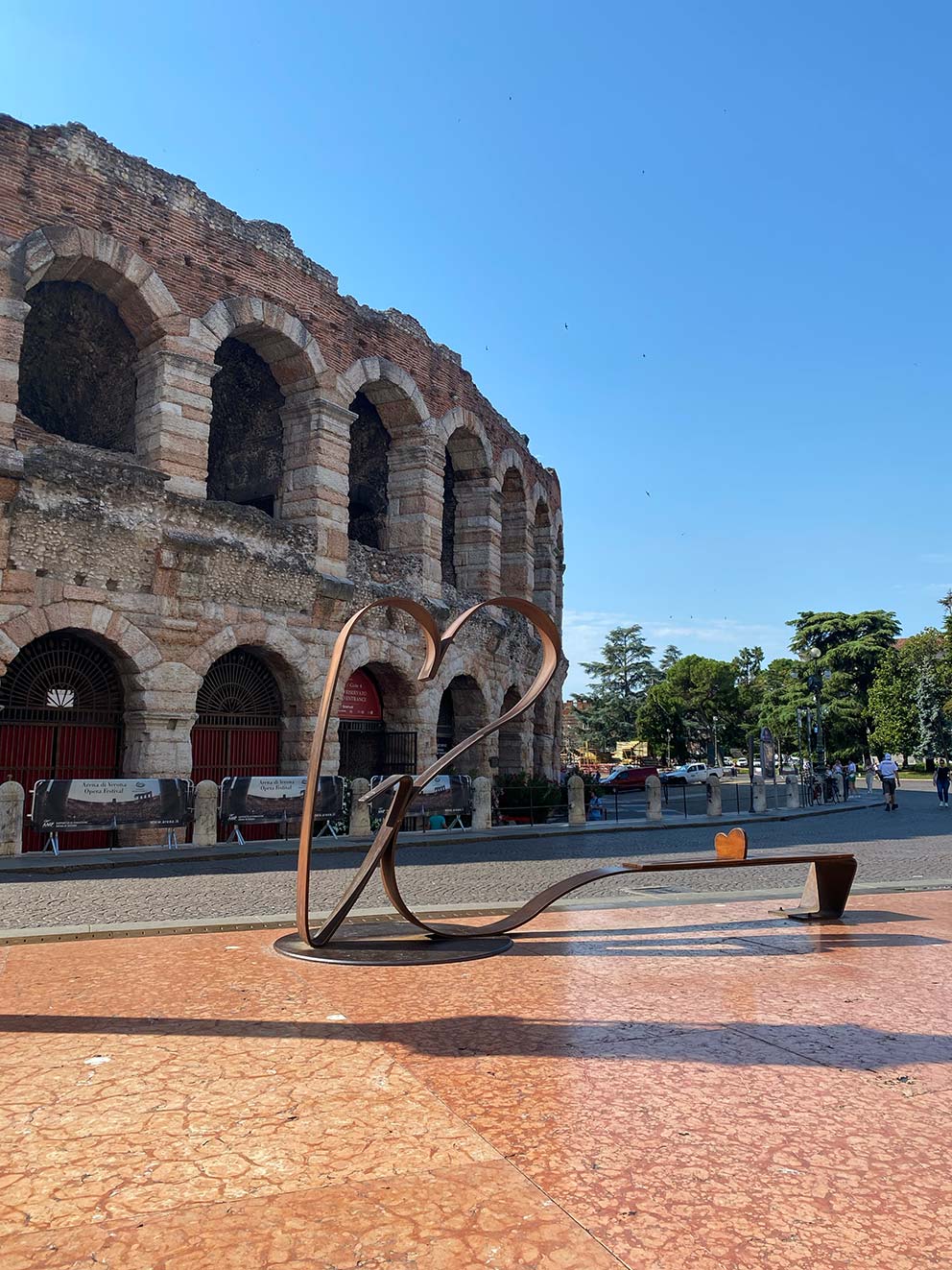The Making of the "Arena di Verona"
The Verona Arena, also known as the Arena di Verona, was built in the 1st century AD during the Roman Empire's heyday. Its construction began around 30 AD, and by the end of the year, 30,000 spectators could gather within its elliptical walls to witness various public spectacles. The amphitheater, reminiscent of Rome's Colosseum, was primarily used for gladiatorial contests, public executions, and animal hunts, showcasing the brutal yet enthralling entertainment favored by the Romans.
Constructed using pink and white limestone from the Valpolicella region, the Verona Arena was a grand architectural feat, with four layers of arches and a height of over 70 feet. The outer facade, adorned with engaged columns and decorative elements, showcased the opulence and grandeur associated with Roman construction.

Evolution of Use
As the Roman Empire declined, so did the popularity of the Verona Arena for traditional gladiatorial contests. The amphitheater faced periods of neglect and decay, but its structural resilience allowed it to weather the passage of time. In the Middle Ages, the arena found new purpose as a fortress, providing refuge for Verona's population during times of conflict.
During the Renaissance, the Verona Arena experienced a cultural renaissance of its own. The amphitheater became a venue for public events and festivities, hosting celebrations, markets, and jousting tournaments. The once-bloody arena transformed into a space for communal gatherings, reflecting the evolving values of a changing society.
Cultural Renaissance
In the 18th century, the Verona Arena underwent significant renovations, restoring its former glory. The amphitheater became a venue for opera performances, marking a pivotal moment in its history. The first opera to grace the Verona Arena's stage was "La Traviata" by Giuseppe Verdi in 1913. This marked the beginning of a tradition that would continue to flourish, making the arena a world-renowned destination for opera enthusiasts.
The Verona Arena's acoustic properties, a result of its elliptical shape and stone construction, were discovered to be exceptional, creating an immersive experience for both performers and the audience. The annual summer opera festival, known as the Arena di Verona Festival, attracts thousands of visitors each year. The operatic performances, set against the backdrop of the ancient arena, create a magical atmosphere that transcends time.
Book tickets to Opera in the Verona Arena
Contemporary Relevance
Today, the Verona Arena stands as a multifaceted cultural venue, hosting a diverse array of events beyond opera. The arena has become a stage for concerts, ballets, and theatrical performances, catering to a wide audience. Its adaptability and enduring charm have solidified its position as one of the world's most iconic performance spaces.
The Verona Arena continues to evolve with the times, incorporating modern technology and amenities without compromising its historical integrity. The arena's capacity has been expanded to accommodate larger audiences, ensuring that more people can partake in the cultural richness it offers.
The Arena di Verona is an ancient amphitheater and a marvel of Roman engineering & architecture
The Verona Arena's journey from a gladiatorial battleground to a thriving cultural center is a testament to its resilience and adaptability. Its history, marked by centuries of transformation, reflects the evolution of Verona itself.
Whether you are an opera aficionado, a history buff, or simply a traveler in search of memorable experiences, the Verona Arena beckons you with its storied legacy and promises an unforgettable journey through time.
Book tickets to Juliet's Balcony!
See the infamous balcony of Romeo & Juliet in Verona, Italy. It's directly in the city center.






